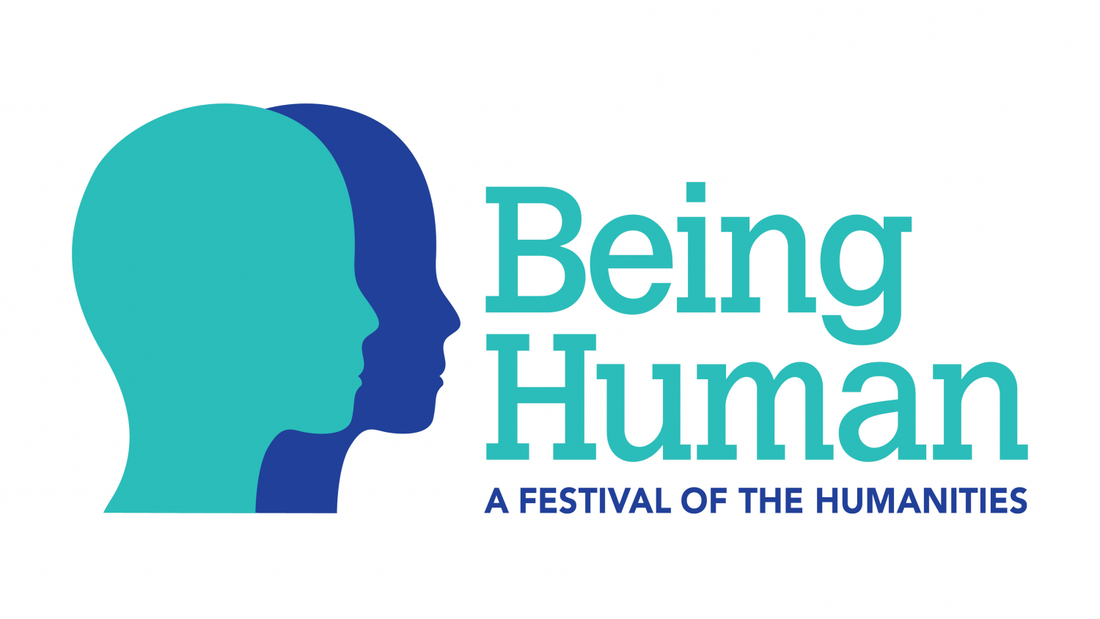HANNAH SWAN ROBERTSON (1725-1807)
Hannah Robertson was born in Glasgow in 1725 and was notable as the first proprietor of the New Inn in Aberdeen. (Note: Diane Morgan in Lost Aberdeen, p. 56, wrongly attributes this to Margaret McGhie, see separate entry). She s best known, however, for her publications, The Young Ladies School of Arts (1766) and her autobiography, The Life of Mrs. Robertson, (A Tale of Truth as Well as of Sorrow) (1791).
Women ran several inns on Aberdeen’s Castlegate, but the New Inn stands out for its activity, location and importance. Built in this prestigious position, the Townhouse formed part of the tenement, and it was central to the traffic of the day. The Masons, who built the inn downstairs from their own new lodge, in 1757 proudly announced:
One of the compleatest [sic] Inns in Scotland, … and as the Possessor, Mrs Robertson, from Perth, is known to be extremely well-qualified for the Management of such a House, having already given general satisfaction in that way, the Society hope that Gentlemen, and others, particularly Brethern will encourage this Undertaking, as the Want of such an Inn in Aberdeen, has long and justly been complained of.
A grandchild of Charles II through an illegitimate connection, she had a charmed childhood and in her Life makes much of her royal connections. On her mother’s remarriage, for her own amusement she acquired skills in embroidery, drawing and flower-making. In 1736, they moved to Perth. As she came of age, she was engaged twice. Ultimately, believing her betrothed lost at sea, in 1749, she married Mr Robertson, a merchant in Perth despite her previous fiancée turning up. The loss of their first child led both to suffer severely for two years, and only when her husband declared bankruptcy and was imprisoned did she rouse herself from lethargy. She claims she picked up a newspaper for amusement and saw an ‘advert for a proper person to conduct a new tavern which was building by the free masons in Aberdeen’ (p. 21). When she ‘begged’ her husband’s permission to take up the job, he wisely foresaw how entirely I was unqualified for such a laborious office, accustomed as I had been to all the conveniences, and elegancies of life: and in truth, a lady of quality might have been considered as well qualified as myself to have become the mistress of an inn: I was however firm in my purpose, and exhorted his reluctant consent (p. 21)
She acknowledged the inn’s success: ‘At first I succeeded in this undertaking, for my tavern was much frequented; and I soon had it in my power to discharge many of my husband’s debts’. She enjoyed the business, felt she was doing ‘good’ and ‘allowed myself the pleasure of feeding the hungry, for nobody went empty away from my door’ (p. 22). Notably, he played no part in running the inn, though he joined her once released from debtors’ gaol. As the first proprietor, she was partly responsible for establishing its reputation, and it became a well-established concern, while she conducted the full range of activities of a prominent inn. The Aberdeen Philosophical Society met there, tickets for concerts and events at the Mason’s Lodge were sold on the premises and roups for anything ranging from the sale of the goods from a returning schooner to household inventories regularly took place. She also advertised that she would teach young ladies the arts of cookery, etc.
However, her tenure was not easy. The Inn suffered serious damage in November 1759 when a Norwegian merchant died having set his curtains alight. The Aberdeen Journal noted, ‘by the speedy Assistance of the Town-Guard, … the Fire was extinguished, we are sorry to add, that Mrs Robertson’s Loss must be very considerable’. She noted that further fires consumed other portions of the property. She also had a long-running argument with the Town Council over the passage between the kitchen in an outbuilding and the inn. Her petition of 1757 explained that despite her lease from the Freemasons, the Council stopped her from building a covered passage to protect food and servants moving between the kitchen and inn. The council also stopped the Masons Lodge covering the passage, because it would block the light from Chalmers’ printing house and the prison, both of which the Lodge refuted. Under pressure, in 1761, she gave up that piece of ground which the Lodge proposed to rent out in lots. Needless to say, this would have made her life difficult. In 1761, she claimed ‘the proprietors [the Masons], when I was re-established, by a series of oppressions finally compelled me to quit, having seized and sold my wines and furniture, though my debt to them was inconsiderable’, returning to Perth in 1763 (Life, 23).
In 1766 she published The Young Ladies School of Arts dedicated to the Duchess of Gordon and ‘calculated for the Improvement of Young Ladies in the Nice and Ornamental Arts’, instructing servants and young ladies, ‘especially young women who have no fortunes, or may be left in low circumstances’ in cookery and a variety of skills and accomplishments. In the expanded edition of 1767, she appealed to ‘Scots Ladies’ to redress their backwardness in housekeeping in the spirit of improvement. It went through multiple editions between 1767 and 1800 and remains in print today. It clearly built on her experience of running the New Inn.
After her husband’s death in 1771 she taught school in Edinburgh and York; and in 1782, with her daughter, opened a shop in Grosvenor Square, London. After successive family disasters, she published her Life, by subscription, which provides an important glimpse into her ‘life of sorrow’. In her 60s she was caring for two grandchildren, supporting support them by teaching, flower-making and from the sales of her books; having survived her husband and nine children, by February 1807 she was living in poverty, with failing eyesight, in the Canongate.
Entry written by Deborah Simonton
Further Reading
Deborah Simonton, ‘Negotiating the Economy of the Eighteenth-Century Scottish Town: Female Entrepreneurs Claim their Place’, pp. 211-232 in Women in Eighteenth-century Scotland, editor with Katie Barclay. Routledge, 2013, and entry in the Biographical Dictionary of Scottish Women.
Women ran several inns on Aberdeen’s Castlegate, but the New Inn stands out for its activity, location and importance. Built in this prestigious position, the Townhouse formed part of the tenement, and it was central to the traffic of the day. The Masons, who built the inn downstairs from their own new lodge, in 1757 proudly announced:
One of the compleatest [sic] Inns in Scotland, … and as the Possessor, Mrs Robertson, from Perth, is known to be extremely well-qualified for the Management of such a House, having already given general satisfaction in that way, the Society hope that Gentlemen, and others, particularly Brethern will encourage this Undertaking, as the Want of such an Inn in Aberdeen, has long and justly been complained of.
A grandchild of Charles II through an illegitimate connection, she had a charmed childhood and in her Life makes much of her royal connections. On her mother’s remarriage, for her own amusement she acquired skills in embroidery, drawing and flower-making. In 1736, they moved to Perth. As she came of age, she was engaged twice. Ultimately, believing her betrothed lost at sea, in 1749, she married Mr Robertson, a merchant in Perth despite her previous fiancée turning up. The loss of their first child led both to suffer severely for two years, and only when her husband declared bankruptcy and was imprisoned did she rouse herself from lethargy. She claims she picked up a newspaper for amusement and saw an ‘advert for a proper person to conduct a new tavern which was building by the free masons in Aberdeen’ (p. 21). When she ‘begged’ her husband’s permission to take up the job, he wisely foresaw how entirely I was unqualified for such a laborious office, accustomed as I had been to all the conveniences, and elegancies of life: and in truth, a lady of quality might have been considered as well qualified as myself to have become the mistress of an inn: I was however firm in my purpose, and exhorted his reluctant consent (p. 21)
She acknowledged the inn’s success: ‘At first I succeeded in this undertaking, for my tavern was much frequented; and I soon had it in my power to discharge many of my husband’s debts’. She enjoyed the business, felt she was doing ‘good’ and ‘allowed myself the pleasure of feeding the hungry, for nobody went empty away from my door’ (p. 22). Notably, he played no part in running the inn, though he joined her once released from debtors’ gaol. As the first proprietor, she was partly responsible for establishing its reputation, and it became a well-established concern, while she conducted the full range of activities of a prominent inn. The Aberdeen Philosophical Society met there, tickets for concerts and events at the Mason’s Lodge were sold on the premises and roups for anything ranging from the sale of the goods from a returning schooner to household inventories regularly took place. She also advertised that she would teach young ladies the arts of cookery, etc.
However, her tenure was not easy. The Inn suffered serious damage in November 1759 when a Norwegian merchant died having set his curtains alight. The Aberdeen Journal noted, ‘by the speedy Assistance of the Town-Guard, … the Fire was extinguished, we are sorry to add, that Mrs Robertson’s Loss must be very considerable’. She noted that further fires consumed other portions of the property. She also had a long-running argument with the Town Council over the passage between the kitchen in an outbuilding and the inn. Her petition of 1757 explained that despite her lease from the Freemasons, the Council stopped her from building a covered passage to protect food and servants moving between the kitchen and inn. The council also stopped the Masons Lodge covering the passage, because it would block the light from Chalmers’ printing house and the prison, both of which the Lodge refuted. Under pressure, in 1761, she gave up that piece of ground which the Lodge proposed to rent out in lots. Needless to say, this would have made her life difficult. In 1761, she claimed ‘the proprietors [the Masons], when I was re-established, by a series of oppressions finally compelled me to quit, having seized and sold my wines and furniture, though my debt to them was inconsiderable’, returning to Perth in 1763 (Life, 23).
In 1766 she published The Young Ladies School of Arts dedicated to the Duchess of Gordon and ‘calculated for the Improvement of Young Ladies in the Nice and Ornamental Arts’, instructing servants and young ladies, ‘especially young women who have no fortunes, or may be left in low circumstances’ in cookery and a variety of skills and accomplishments. In the expanded edition of 1767, she appealed to ‘Scots Ladies’ to redress their backwardness in housekeeping in the spirit of improvement. It went through multiple editions between 1767 and 1800 and remains in print today. It clearly built on her experience of running the New Inn.
After her husband’s death in 1771 she taught school in Edinburgh and York; and in 1782, with her daughter, opened a shop in Grosvenor Square, London. After successive family disasters, she published her Life, by subscription, which provides an important glimpse into her ‘life of sorrow’. In her 60s she was caring for two grandchildren, supporting support them by teaching, flower-making and from the sales of her books; having survived her husband and nine children, by February 1807 she was living in poverty, with failing eyesight, in the Canongate.
Entry written by Deborah Simonton
Further Reading
Deborah Simonton, ‘Negotiating the Economy of the Eighteenth-Century Scottish Town: Female Entrepreneurs Claim their Place’, pp. 211-232 in Women in Eighteenth-century Scotland, editor with Katie Barclay. Routledge, 2013, and entry in the Biographical Dictionary of Scottish Women.



